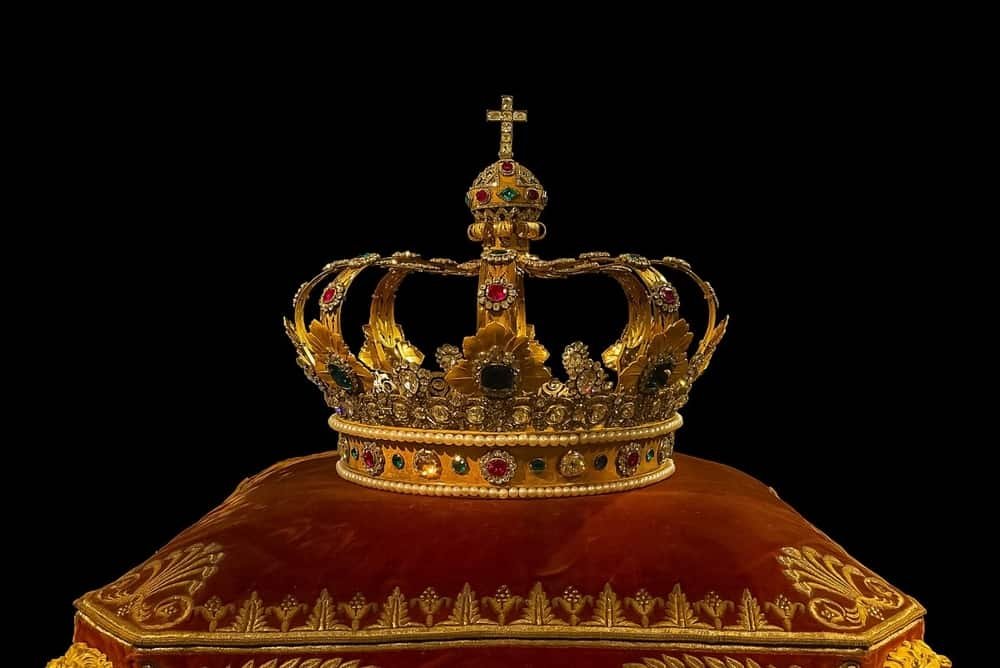Nobility and Greeting Vocabulary
Nobility and greeting vocabulary: depending on social rank, how to address the person?
The title of nobility is of fundamental importance among aristocrats. It shows both the power of the family within the house, the political force at the nobleman’s disposal and the administrative responsibilities of the latter.
Read also: European Noble Ranks | What is the hierarchy of titles in Aristocracy?
The origins of this noble classification come from former leaders who saw the popular and social impact of this family identification. Although in the beginning nobility titles were used only for parade, over time they became the identity, even the credibility, of each ruler in addition to being an indispensable tool for ensuring the social cohesion of the kingdom.
Majesty
Majesty is an English word derived from the Latin maiestas meaning “great” and is usually used as a greeting (style) to the head of the monarchy, usually on the same level as king (king) and emperor (emperor) and their partners. When it is used to refer to a third person it is called “His / Her Majesty” (depending on gender) and when used to address a second person it is called “Your Majesty”.
This word began to be used to address the King of England during the time of King Henry VIII. Sometimes this greeting also includes other words in its usage, such as “Your Imperial Majesty” to refer to the emperor and his empress or maharani (female emperor). Another example is “Catholic Majesty” to address the King of Spain and his queen or Queen of Spain.
Examples of official use in the United Kingdom:
- His Majesty The King (King’s Majesty): used to address the ruling king.
- Her Majesty The Queen: used to greet the queen in power or the consort of the current king.
- Her Majesty Queen Mary: used for the wife of a deceased king.
- Preceded by Your, His, Her, or Their: is a title used to address or refer to a sovereign or the wife or widow of a sovereign
Highness
Highness is the official greeting used to refer to members of the ruling dynasty (princes and princesses) or heads of monarchs whose rank is below the king. The emperor’s descendants or relatives used the greeting “Imperial Highness” while the royal family members used the greeting “Royal Highness”.
In the Middle Ages, this greeting was also used to address the King of England and was used interchangeably with majesty, before finally the king specifically used majesty only.
Examples of official use in the United Kingdom:
- His Royal Highness The Prince of Wales: used to address the crown prince
- His Royal Highness The Prince Andrew (His Majesty Prince Andrew): used to address the son of a king or queen
Grace
Grace is a greeting used to address high ranking parties. Formerly this was also one of the greetings of the King of England. In today’s Great Britain, this greeting is used to address dukes and duchesses who are not members of the royal family. Grace is also used to address archbishops.
Examples of official use in the United Kingdom:
- His Grace The Duke of Devonshire (His Royal Highness The Duke of Devonshire).
- His Grace The Archbishop of Canterbury (His Holiness the Archbishop of Canterbury).
Lord
Lord is a greeting for those who have authority, control, or power over other things, and this can be used for God and other supernatural substances or for nobles. The greeting my lord can be used to greet kings in the past, besides also using other greetings such as Your Highness or Your Majesty. Today this greeting is still officially used of the nobility in Great Britain.
Normally, lord is used as a title and address for men. Even so, there are cases when women also use this title. As ruler of the Isle of Man, Queen Elizabeth II bears the title “Lord of Mann.”
Sir
Sir is the honorific greeting in English. Officially, this greeting is addressed to a man who bears a certain noble title (knight or baronet). In daily activities, this greeting can also be used to show respect for the person being greeted, such as a male teacher. Sir can also be used to address a man whose name is unknown.
Sire
Sire is the greeting used to address the Kings of Great Britain and Belgium. After greeting once with the greeting Your Majesty, then he was justified in greeting the king with sire. Sire and sir, also (mon) sieur in French, have senior Latin roots.
Gentleman
In the beginning, gentleman was used to refer to a man from the upper class. At court, gentleman was used officially as the title of court officials and officers. For example, the gentleman of the bedchamber was a man who served as the king’s personal assistant, waiting for him at meals, or helping him when he was dressed. The term gentlewoman is also used for women who become personal assistants or maidservants of the queen or empress, although the word was later replaced with lady in later times.
In modern usage, this word refers to those who are seen as gentlemen. The use of gentleman is also used generally with all men, or as a sign of segregation of facilities based on sex, such as markers in the bathroom. In an event or announcement in various public places, the presenter or reporter usually greets people with ladies and gentlemen as a form of respect.
Lady
Lady is an English word that was originally used as the official title or greeting of a noble woman, then followed by her clan name. In this context, lady is the equivalent of the word lord. In the Middle Ages, lady was used to refer to a king’s daughter, followed by her first name, for example: The Lady Mary, because language and Middle English did not have female equivalents for aristocratic titles.
The expression my lady is also used when addressing aristocratic women, although it is no longer used in official usage in modern times. In traveling, this word is also used to refer to those who are seen as respectable women, just as gentleman is used to refer to an honorable man. Lady is also used as a title for palace maids.
In modern usage, this word is used to refer to all women in general to show respect, especially to elderly women or women of good character. However, in some cases, this word is also used to refer to women who are generally seen as not having prestigious jobs, such as a cleaning lady called the cleaning lady or a homeless woman called a bag lady.
Madam
Madam is a call to women as a form of politeness and is often abbreviated as ma’am. After greeting once with the greeting Your Majesty, then it is justified to greet the queen or empress with ma’am.
Officially, madam has also become the official greeting for aristocratic women in modern Great Britain, making it the equivalent of lord. In everyday conversation, madam is also used to address a woman whose name is unknown.
In other uses, madam is also used as the equivalent of mister. For example, if a president is a man, he will be called Mister President, while if a woman is called Madam President. In a negative context, madam is also often identified with women who manage brothels.
According to social rank, what is the right word of greeting?
Here are the titles by decreasing rank and the correct way to address the nobility and greeting vocabulary:
For an Emperor ……………………………………… “Your Majesty”
For a King / Queen …………………………………… ” Your Majesty “
For a Prince consort ………………………………… “Your Majesty”
For a Crown Prince ……………………………………… “Your Royal Highness”
For the Grand Duke of Luxembourg ……………. “Your Royal Highness”
For a Prince / Princess …………………………………”Your Highness”
For the Grand Master of Malta ………………………. “Your Eminent Highness”
For a Cardinal ………………………………………………“Your Eminence”
For an Archbishop ……………………………………… ” Your excellence “
For a Grand Duke …………………………………….…… “Sir”
For a Duke / Duchess …………………………………… “Sir / Madam”
For a Marquis / Marquise ……………….…………….. “Sir / Madam”
For a Bishop ………………………………….……………. “Monsignor”
For a Count / Countess ……………………………………”Sir / Madam”
For a Baron / Baroness ………………………………… “Sir / Madam”
The British sometimes have a different method of addressing. This is one of their peculiarities. For example, for:
An archbishop ………………………… “Your Grace”
For a Grand Duke ……………………. “Your Grace”
For a Duke / Duchess ………………. “Your Grace”
For a Marquis / Marquise ………… “Mylord / Mylady”
For a Bishop …………………………… “Your Grace”
For an Earl ……………………………… “Lord / Lady (locality)”
For a Count / Countess ………………. “Mylord / Mylady + (name)”
For a Baron / Baroness ……………… “Mylord / Mylady”
For a Baronet / Knight ………………. “Sir + (first name)”
Social Rank & Greeting: How to address Queen Elisabeth II of England?
During the initial greeting at the start of the conversation, you should greet the Queen of England with “Your Majesty”. Then in the course of the conversation, you should call her “ma’am”. This is the contraction of “madam”, it is pronounced “maham”. Queen Elizabeth speaks French very well. But that’s no reason to continue in the language of Molière. No, you will have to wait for her to start the conversation (the answer to your greeting) and you will have to continue in the language she used. So, then, go on “Your Majesty”, then “Madam”.
Kings and Queens of England and Britain | Monarchs of England and Scotland
Source: PinterPandai, Wikipedia
Photo credit: Pxhere



